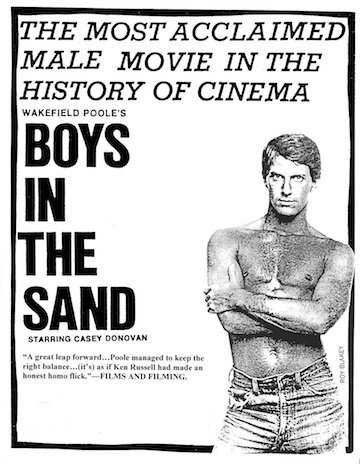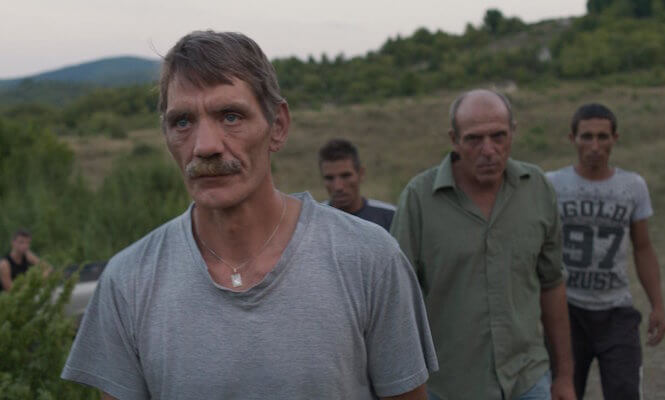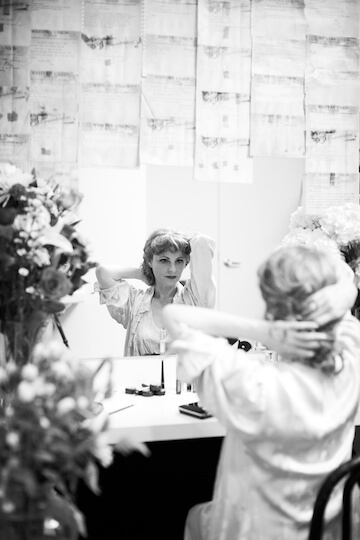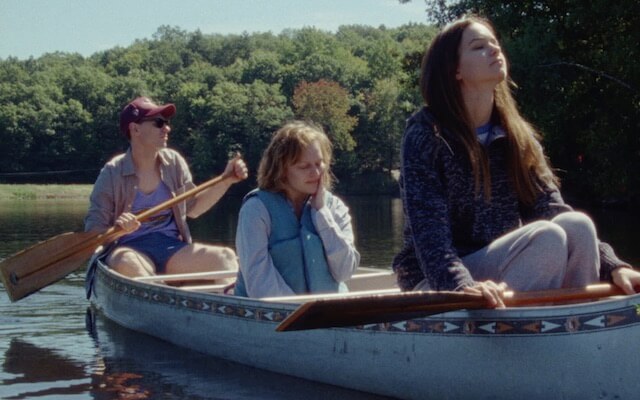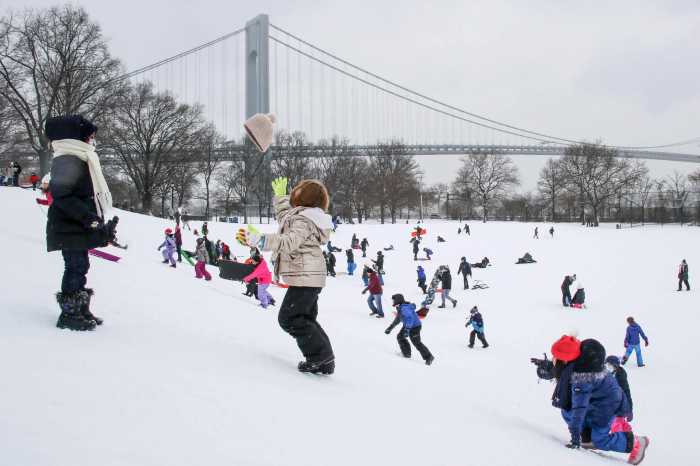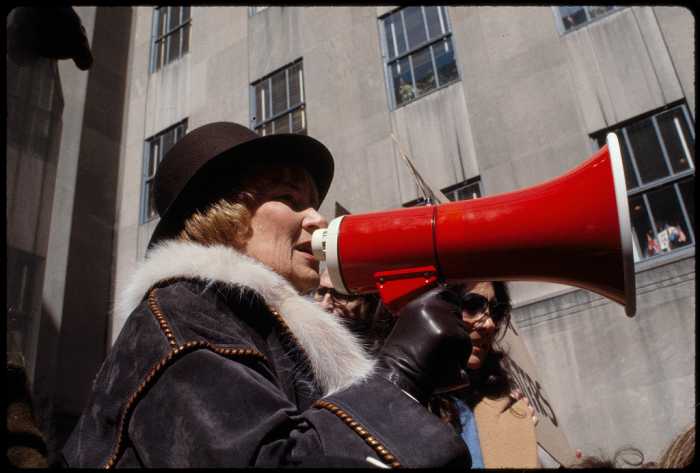The Metropolitan Museum of Art. | CARMELO BAYARCAL/ WIKIMEDIA COMMONS
“Everyone chooses to remember what they want to remember,” Mark Jacobson observes in his New York magazine piece “What Everyone Gets Wrong About ‘70s New York” late last year about one of the “few times in recent New York history [that] have been so longed for, so endlessly discussed.” This longing, so prominent today, has been mixed, it should be noted, with equal portions of loathing. For in the last analysis, what everyone “chooses to remember” about New York in the ‘70s is “Taxi Driver,” Martin Scorsese’s 1976 film about the squalor of the city rendered as a vision of Hell visually confected by Guy Peellaert and Hieronymus Bosch with a Bernard Herrmann score simmering ominously in the background. It’s a place no one wants to live. Yet people lived there and thrived there —in ways they don’t at all today.
Make no mistake, New York in the ‘70s was no picnic. Filthy, squalid, its streets and buildings badly in need of repair, as its economy teetered on the verge of total collapse, it laid out no welcome mat for anyone. Yet for those keyed to its vaguely sinister rhythms it was still Fun City. Novelist Samuel R. Delany in his non-fiction paean “Times Square Red, Times Square Blue,” writes, “As a Black gay man who had first set off from Harlem for Times Square one Sunday morning in 1957, more than a decade prior to Stonewall, with the specific goal of coming out, and who, since 1960, had regularly utilized those several institutional margins traversing the Forty-Second Street area in which gay activity thrived, I had to acknowledge with the early newspaper announcement of redevelopment that an order of menace now hung over a goodly portion of the active aspect of my sexual life.”
Robert De Niro in Martin Scorsese’s “Taxi Driver.” | COLUMBIA PICTURES/ TRI STAR
That “order of menace” quickly came to pass with what is now referred to as the Disneyfication of Times Square. The all-night movie theaters and dirty book stores were gone, and the cheap restaurants with them. But then New York by the ‘90s had come to eliminate the consumers of such establishments, as well. The city, as Fran Lebowitz has so sagely observed, has by and large entirely eliminated culture by making itself a home for the very, very rich alone. And said rich can produce nothing. They can only consume. And what they wish to consume is made by classes they no longer find tenable as neighbors. This wasn’t the case in the ‘70s for reasons I was able to observe first-hand. Because for the better part of that decade I worked at the Metropolitan Museum of Art — a matchless commingling of the High and Low.
Memories of chaos and quiet in ‘70s Manhattan
I was first employed in the print reproductions shop of the Met. One of my co-workers was a classic Muscle Queen. Butch to the max to all appearances, Richie adored breaking into a chorus of “Take Back Your Mink” from “Guys and Dolls” at the slightest provocation. I next worked as a guard and finally in the library of its Department of Prints and Photographs, where I often saw artworld mover and shaker Sam Green bring his petit ami Robert Mapplethorpe to see the museum’s George Platt Lynes holdings —photographs whose elegant homoeroticism Mapplethorpe duly ripped off.
Working at the Met in any capacity was an ideal low-key, trouble-free job for a writer, supplying by its very nature no end of time to think about and plan the “real work” that would transpire outside its corridors. But the Met was also a world unto itself. For it was there the elite mixed with the hoi polloi in cheerful confusion. This became quite apparent to me during the period I worked as a guard. I was, in a very general way, an “authority figure,” making sure no harm came to the art and supplying visitors with necessary information about the building’s whys and wherefores, particularly when special ticketed exhibits like the massive Van Gogh show were being featured.
Philippe de Montebello, the Met’s chef curator at the time I was there, hated such shows. They herded visitors quickly though rooms filled with far too many paintings to contemplate and therefore appreciate, and were more like a high-class Fun Fair than an art exhibit. To prove his point, he took two Monet paintings from a show then making the rounds of the nation’s galleries and hung them in the great hall —right at the entrance to the various wings of the museum proper. One could sit and look at them for hours without rush or fuss. And there’s no question that those who did so understood Monet in ways the Van Gogh goers didn’t understand Vincent at all.
The embodiment of elegance but in no way a snob, de Montebello was great fun to chat with. He was dedicated to serious art, but there was nothing of the pompous about him —even though he looked as if he’d stepped right out of a late period Visconti movie.
Even more fun was Diana Vreeland. A fashion doyenne of exquisite taste and cheeky good humor, Vreeland set up the museum’s Fashion Institute when I was there. It is now named after Miranda Priestly (aka Anna Wintour), a woman who knows everything about the business of fashion but precious little about the art. Vreeland made clear that fashion was art with her exhibition of the work of the great Spanish-born designer Cristóbal Balenciaga. Putting the pieces on display with exquisite care, Vreeland made plain that Balenciaga gowns were works of sculpture created to be worn. No one who attended that show, even if they were indifferent to fashion in general or thought it “frivolous,” could fail to be impressed.
My favorite memory of Vreeland is in relation to a quite different show —one devoted to the “chemise” dresses Madeleine Vionnet created just after the turn of the last century. It was a spectacular exhibit. Dresses made of the most delicate lace in gorgeous shades of pale pink, yellow, lavender, and blue were on display —looking like a candy box come to life. Vreeland wasn’t, however, Willy Wonka, though she had her way with children. On this occasion, museum director Thomas Hoving had brought a couple of wealthy donors to view the show early in the morning before the museum was open to the general public. This particular couple had a daughter of about six or seven. Vreeland shook their hands and nodded graciously to them and then took hold of the little girl. She brought her right up to the Vionnet dresses, told her about the material they were made of, and explained the revolution they created. For prior to these “chemises,” women were required to wear dresses encumbered with all manner of metal stays, hoops, and the like —their bodies encased in clothes that were not all that different from suits of armor. Vionnet brought an end to all that, freeing women’s bodies, and Vreeland was most intent on making this girl —who had just reached the age of interest in looking “pretty” —precisely why this was so important. The girl was, of course, dazzled. But make no mistake, Vreeland was at her most serious. In education “get them while they’re young” is the watch-cry, and its safe to say this girl —now I’m sure a supremely fashionable adult —learned plenty from what this Auntie Mame on steroids was so spiritedly teaching her that morning.
In my duties as a guard, I saw a great many notables come and go through its halls and galleries. The great Italian actor Massimo Girotti (“Ossessione”) was much taken with a Cezanne exhibit, as were the filmmaking couple Jean-Marie Straub and Daniele Huillet. They spent an entire day in the Cezanne room, the fruits of their labors made visible in their 1990 film “Cezanne —Conversation with Joachim Gasquet.” The intensity with which their eyes combed every inch of the artist’s canvasses was a sight to behold.
Considerably less intense were the frequent gallery sorties of Art Garfunkel, who found the Met the perfect place to meet attractive young ladies, just as he met Theresa Russell at a Klimt exhibit in Nicolas Roeg’s 1980 “Bad Timing.” Art being occupied, I never engaged him in conversation.
The original release poster for “Boys in the Sand,” starring Casey Donovan, aka Cal Culver.
Conversation was likewise a non-starter with Woody Allen and Dick Cavett. Almost every afternoon, they met on a bench in the great hall. They never went in to see an exhibit as far as I know. They just sat there —Woody (his face a dour mask) talking to Dick much like an analysand to a shrink. In all the years I saw them there, I never once noticed Cavett saying a single word.
The same can’t be said of a trio of gay gentlemen: actor tuned novelist Tom Tyron, his lover gay porn star Cal Culver (aka Casey Donovan of “Boys in the Sand” fame), and their pal actor Richard Deacon (Mel Cooley on “The Dick Van Dyke Show”). Deacon was an art expert and he would give his friends special guided tours of the paintings, imparting all manner of priceless information to them. They were a swellegant triumvirate. Alas, all were taken by AIDS.
The best of Special Visitor luck came one day to my friend and fellow guard Ronnie. Gay, black, and wildly sophisticated, it was his good fortune to come face to face with American-born French cabaret legend Josephine Baker. While Ronnie’s primary devotion was to Diana Ross, he knew an immortal goddess when he saw one, and chatted amiably with her for at least 20 minutes. “What did you talk about?” I asked. “Everything!,” Ronnie happily replied.
In all my Met years, the one notable I got a chance to talk about “everything” with was Francis Bacon. Periodically a selection of Bacon paintings were put on display in one of the galleries. Keeping with the de Montebello style there were only a select few, available for all to see without a special ticket. Bacon’s unique mixture of the figurative and the abstract was of course unique. Likewise, the violence the paintings displayed: screaming popes, naked men wrestling in a manner more suggestive of murder than romance. His work frightened many of the guards. Frightening to them, too, was the fact that Bacon would come early in the morning before the museum opened and visit his own paintings. He’d stand for hours looking at them, with the same intensity the Straubs showed Cezanne. The thing was these were his own works, yet he regarded them as if they were made by someone else. Perhaps in his own mind they were.
Off-putting as he was to many, I always found Bacon a jolly fellow. He chatted me up about places he might go in the city “for a drink,” with the clear indication that mere imbibing wasn’t his only interest. I told him to try Keller’s and the Ramrod in the West Village, down by the piers. There, he was likely to find gentlemen eager to put their cigarettes out in his soft flesh prior to applying a bit of the lash. But those were places of “danger” —both real and theatricalized. The Met was safe haven. And that’s why it’s always embodied the ‘70s for me. The world outside may rage away, but in its cool corridors art and silence reigned. And in the tumult of the ‘70s, who could ask for more?

